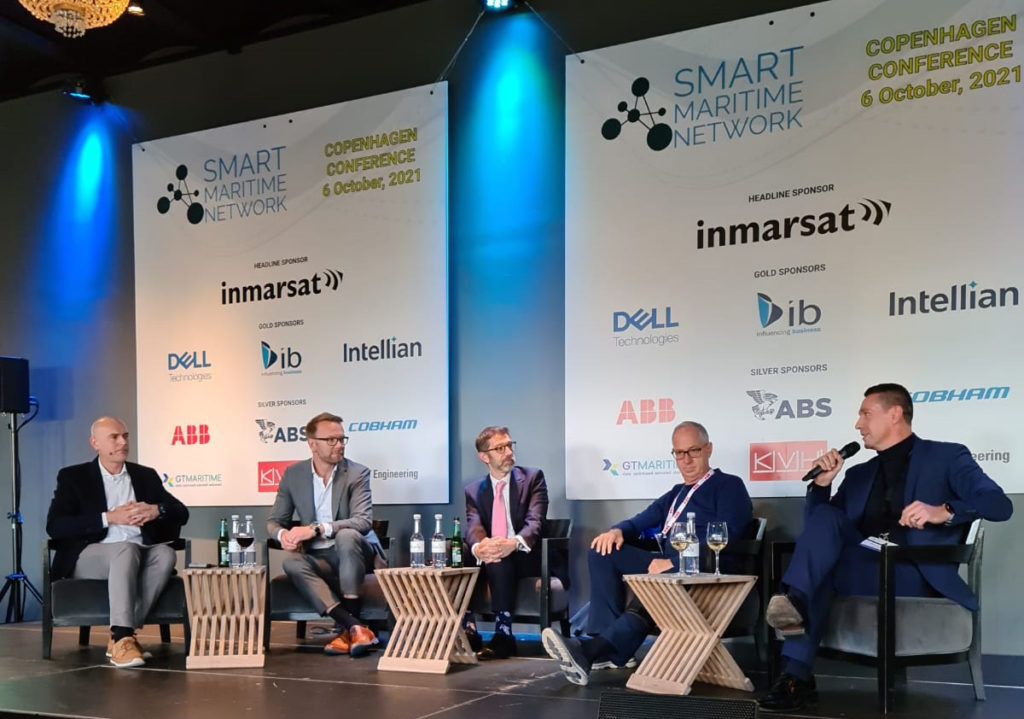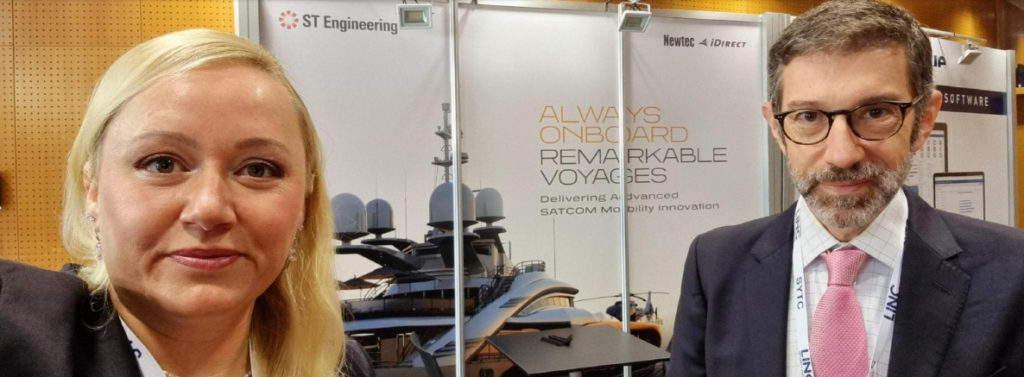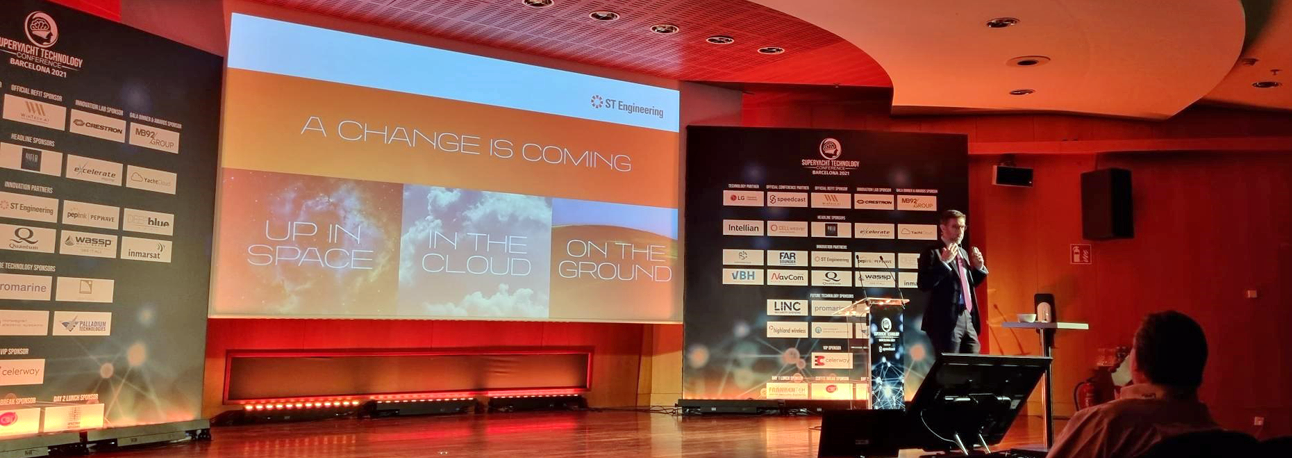
Our Head of Mobility, Andrew Faiola, has had a very busy month, getting back to travel and face-to-face events. London International Shipping Week, Seatrade Miami, the Monaco Yacht Show, the SMN Copenhagen conference, and the Superyacht Technology Conference, Barcelona all took place in quick succession – a sure and encouraging sign that the maritime market is taking true steps towards recovery after turbulent last year and a half. He had a chance to visit some of them, which served as an excellent barometer of the health of three of the main maritime segments—commercial shipping, cruise, and yachting.
The different segments of the maritime vertical have faced diverse challenges during lockdown. From crew welfare to supply chain disruption to changing passenger expectations and more, satellite continues to be a true enabler in helping these markets to fulfil their roles. Whether it’s commercial shipping, superyacht or cruise, all segments have one thing in common, and that’s data. They can’t get enough of it.
Andrew’s recent odyssey began at SeaTrade, Miami.
SeaTrade
Of all the maritime segments, cruise has been most impacted by the pandemic. Attendance and exhibition space was much diminished from previous years. This was largely down to the continued travel ban preventing many people from travelling to Miami. For those in attendance though, the mood was buoyant. As one of the original villains of the pandemic the cruise industry has something to prove, and Seatrade was an opportunity to highlight a segment returning to bold health. Cruise lines went to great lengths to highlight the Covid-19 precautions they have implemented, and passengers have responded. The global fleet is likely to be largely back at sea by the end of the year, and 2022 bookings for many cruise lines are already exceeding 2019 numbers.
Passenger expectations have changed dramatically during the pandemic. After months of lockdown, and a reliance upon video conferencing software and social media, they expect nothing less than to be able to communicate with friends and family as if they were at home or at any land-based resort. Being able to stay in touch is just as important for the crew as the pandemic is still an acute crisis in many parts of the world. A number of cruise lines and service providers expect to see connectivity bumped up to “inaugural” cruise levels to become the norm going forward.
As with other segments, there is keen interest on upcoming NGSO constellations, but also on enhanced terrestrial connectivity, considering that cruise ships spend a lot of their time in port or within range of cellular networks. Passengers expect a completely seamless experience when they leave the shore for the ocean. Today, thanks to advances in technological capabilities, this can be delivered. The telco world is moving toward the 5G mobile standard, which will be a universal architecture integrating every form of access technology into one common network. The cruise sector is also adopting critical IT advances like standardization, virtualization, and orchestration to improve the speed, scale, cost, and flexibility of service delivery. This will facilitate a multitude of use cases on board and given that a cruise ship is essentially a floating city, this is essential to retain passenger loyalty and to cope with daily operations. The satellite industry must adopt these standards to better integrate with these networks to deliver consistent quality of services across multiple access networks and orbits.
Next, Andrew travelled to London to International Shipping Week and SMN Copenhagen – where key trends Digitalization, Sustainability, and Crew Welfare were hot items
The link between digitalization and decarbonization is clear. Today, all eyes are on the shipping industry to see how it will react and tackle the fast-approaching goals that were set out in the Paris Agreement that aims to substantially reduce global greenhouse gas emissions to limit the global temperature increase. Decarbonization in the maritime industry is a significant part of tackling climate change. However, in parallel, the quest for greater operational efficiency is set to continue. This will see the role of satellite continue to rise in importance.

During the SMN event, Andrew moderated the roundtable session “Is real-time access to data required? Is there a tipping point?”
The roundtable participants were very diverse and comprised of software companies, a ship manager, a service provider and a satellite operator, giving a well-rounded perspective. There were several important themes that came out during discussions. The first was the diverse needs on board. Different parts of the vessel must report at different frequencies. Some high frequency, some occasional. The same requirements are also reflected in different groups onboard: IT, OT and crew. This means that flexibility of services is essential.
The other key point to be raised was that though customers demand real-time data, it is not often used in a timely manner. So, despite the fact that there are clear cost-savings to be made through the operational efficiencies brought about by access to shipboard data, they are not necessarily being capitalized on due to a reluctance to make significant changes to their daily operations.
The other important takeaway from the discussion was that there is still significant pent-up demand for connectivity. For example, Inmarsat has seen bandwidth consumption increase 22% year to date. Much of that growth is created by the need for crew connectivity, but business application use is rising as well. Despite connectivity access increasing and the costs coming down, ships are still constrained in comparison with connectivity on shore.
Incredibly, despite the strides forward that have been made with respect to meteorological data access, a panelist commented that most ships still use the Noon report (the captain assesses the weather and sea state by sight). Putting that into the satellite context, the equivalent would be launching a satellite and then checking on its health once by day by looking at it through a telescope (bearing in mind that a large commercial ship and GEO communications satellite are both in the $200M order of magnitude and last for about the same amount of time).
During Andrew’s second appearance at SMN Copenhagen, he was part of a panel focused on the market forces that are driving the industry towards greater standardization and interoperability. This complex question prompted discussion around the fact that the satellite industry has many different aspects to consider, including the need to adapt to multiple orbits as well as frequencies in order to simplify access. This was particularly noted by Intellian. The adoption of terrestrial standards was again highlighted by Andrew.
The SMN Council continues to work on the development of guidance around data ownership. Although it’s generally accepted that the ship owner owns their own data, the real issue is rights of access. Most large ship managers will now have nearly 100 percent VSAT penetration across the ships they manage and look for operational excellence across their fleets. For this, exchange of data between ship and shore is key.
Monaco Yacht Show and Superyacht Technology Conference, Barcelona

Speakers offered inspirational TED-type talks and knowledge sharing to an audience of tech buyers, service providers, captains, ETOs and AVIT officers. Andrew gave a talk which introduced the New Ground concept, that has been introduced by ST Engineering iDirect and aims to heighten awareness of the ground segment, and subsequently fielded some great questions from the audience. There was a lot of talk around connectivity, including satellite, but still some confusion about different NGSO offerings and availability as well as service levels – something for our industry to work on and ensure that the right messages are getting through.
It was an excellent event that gave us the rare opportunity to get face-to-face with end users and to meet with a number of service providers, both large and small. It was another reminder of just how important in-person events are.
Talking, innovating, supporting
With events up and running once again, the maritime sector – and its many sub-segments – can continue its march towards digitalization. As an industry, we must ensure that we continue to engage in constant dialogue with service providers and end users to ensure that we are moving forward together in a collaborative way because it’s our innovation that will help our customers to meet their overall future goals.
Want to read more on maritime and digital transformation? Check out these links:
